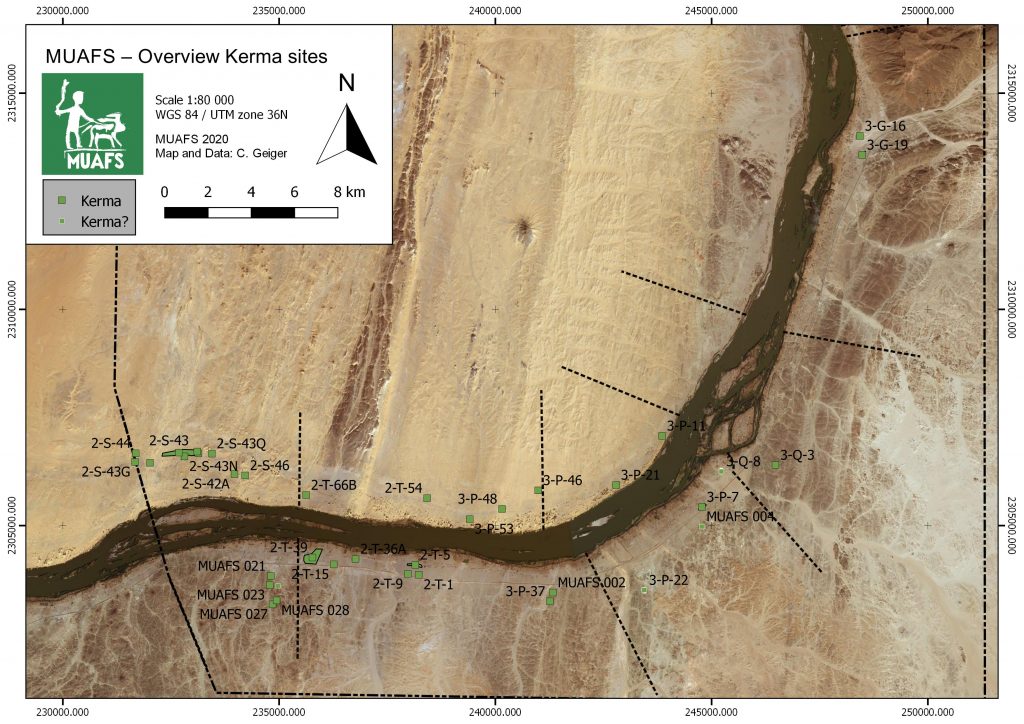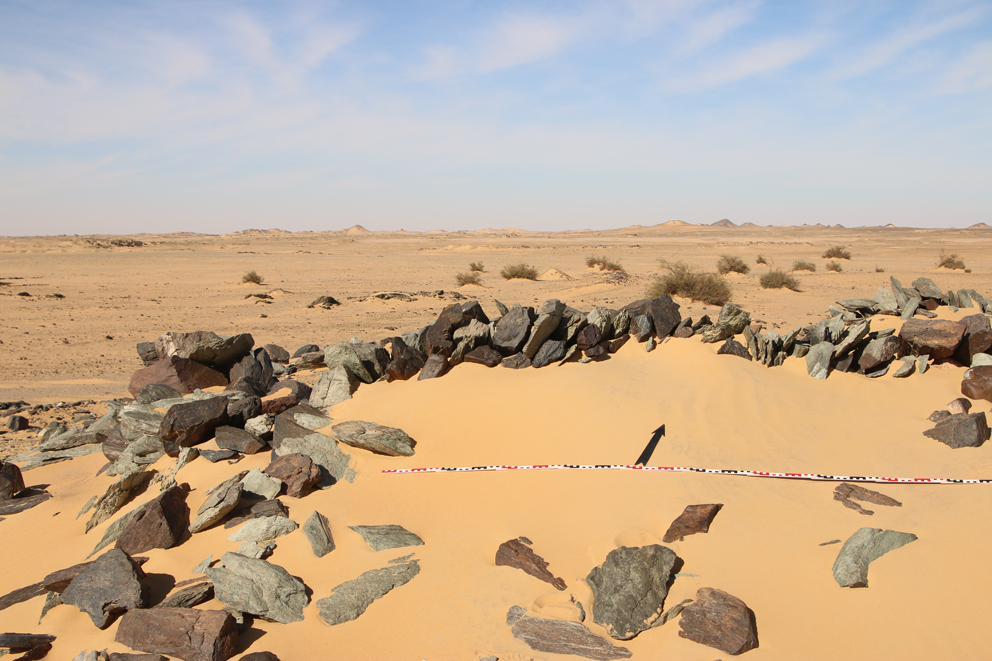The last weeks were busy, among other tasks with completing data for our GIS project in order to create new maps based on our survey results. As I have shown in my OREA e-lecture, Cajetan has created site distribution maps according to periods – simply fantastic to work with!
Since the ERC project DiverseNile will focus on Bronze Age remains, the sites currently labelled as ‘Kerma’ are of much interest. The present map also includes some unclear sites where a proper dating and/or association with the Kerma culture remains to be checked.

Brigitte Gratien, one of the leading experts on the Kerma culture, recently pointed out the general problems related to Kerma remains outside of the heartland of the Kerma kingdom at the Third Cataract:
‘As everybody knows, writing about Kerma north of the Third Cataract is not so easy. Most of the excavations were done a long time ago and the results come mostly from the Nile valley. Where are the borders of the Kerma state or kingdom? What are the stages in the expansion of Kerma to the north, and what was the nature of the links and relationship with the other Nubian cultures and with Egypt?’(Gratien 2014, 95)
The Attab to Ferka region and renewed excavations at Kerma sites in the area have much potential to address these questions and problems which will be of first priority for the DiverseNile project. In general, very little rural settlements have been investigated up to now in northern Sudan, creating a lack of means to contextualise the central sites like Kerma or Sai Island. Sai is regarded, due to the strong Kerma presence on the island prior to the New Kingdom and especially the very large cemetery with huge tumuli, as northern stronghold of the Kerma kingdom. But how does this presumed function of the island relate to the periphery of Sai? What do we know about Kerma dwellings in the area?
This brings us back to the MUAFS concession and to our newly established distribution of ‘Kerma’ sites. Camps, settlements and cemeteries of the Kerma culture were recorded at both riverbanks. Except for two large Kerma tumulus cemeteries associated with the Kerma classique period in Ferka East, 3-G-16 and 3-G-19, all of the sites are clustered in the southern districts of Attab, Ginis and Kosha, thus quite close to Sai Island.

Of particular interest are 1) stone structures in the Attab West district associated with 18th Dynasty pottery but of unclear cultural attribution since also Nubian material culture was present (Budka 2019, 24‒25) and 2) various settlement sites in the district of Ginis East. The latter were partly investigated by our text excavations earlier this year.
It is still too early, but sites like GiE 001 and the ‘watchtowers’ in Attab West will hopefully allow a comparison of ‘provincial’ Kerma remains like Gism el-Arba (Gratien et al. 2003; 2008) and H25 near Kawa (Ross 2014) with the capital of the Kushite kingdom, Kerma itself (Bonnet 2014). At least some of the questions regarding Kerma north of the Third Cataract are likely to be answered in the next years.
References
Bonnet 2014 = Bonnet, C. 2014. La ville de Kerma: une capitale nubienne au sud de lʼEgypte. Paris.
Budka 2019 = Budka, J. 2019. ‘Towards Middle Nile Biographies: The Munich University Attab to Ferka Survey Project 2018/2019’, Sudan & Nubia 23, 13‒26.
Gratien 2014 = Gratien, B. 2014. ‘Kerma north of the Third Cataract’, in J. Anderson and D. Welsby (eds), The Fourth Cataract and Beyond. Proceedings of the 12th International Conference for Nubian Studies. British Museum Publications on Egypt and Sudan 1. Leuven, 95‒101.
Gratien et al. 2003 = Gratien, B., Marchi, S., Thuriot, O. and J.-M. Willot 2003. ‘Gism el-Arba, habitat 2. Rapport préliminaire sur un centre de stockage Kerma au bord du Nil’, Cahiers de Recherches de l’Institut de Papyrologie et d’Égyptologie de Lille 23, 29-43.
Gratien et al. 2008 = Gratien, B., Marchi, S., Sys, D. and R.-P. Dissaux 2008. ‘Gism el-Arba – Habitat 2, Campagne 2005–2006’, Kush 19 (2003-2008), 21-35.
Ross 2014 = Ross, T.I. 2014. ‘El-Eided Mohamadein (H25): A Kerma, New Kingdom and Napatan settlement on the Alfreda Nile’, Sudan & Nubia 18, 58‒68.
